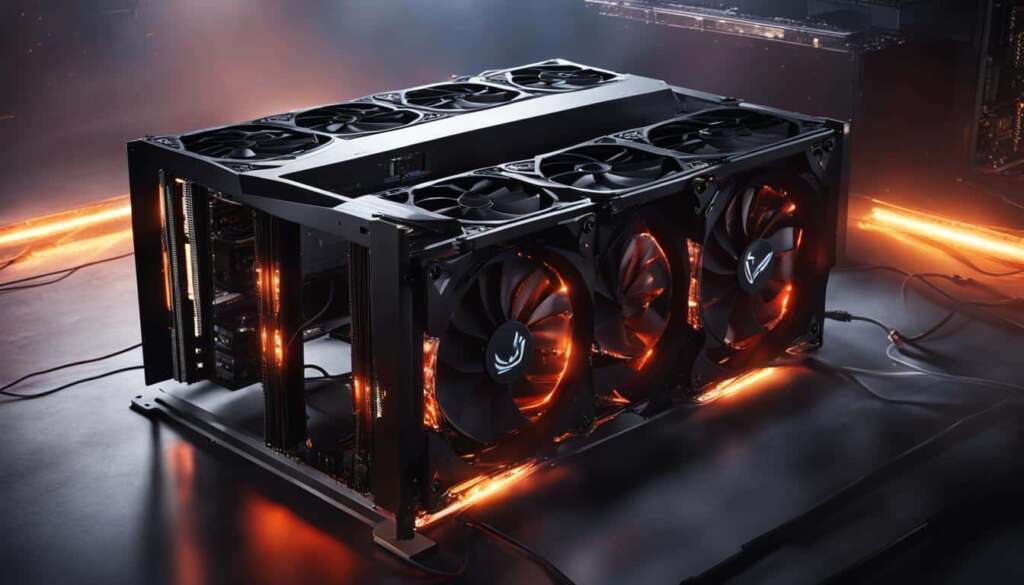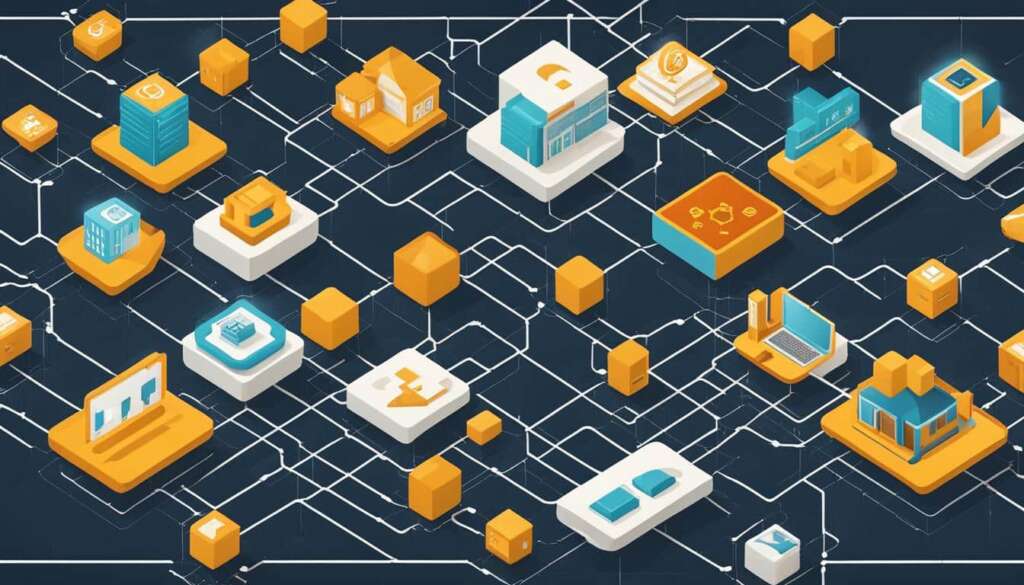Table of Contents
Welcome to our comprehensive guide on cryptocurrency mining. In this article, we will explore the fascinating world of mining digital currencies such as Bitcoin, Ethereum, and more. Whether you’re a crypto enthusiast or a beginner looking to enter the world of mining, we’ve got you covered.
Cryptocurrency mining is the process of validating transactions and adding them to the blockchain. Miners use powerful hardware known as mining rigs to solve complex mathematical puzzles, earning digital currencies as a reward.
In this guide, we will walk you through the steps of setting up your mining rig, choosing the right mining hardware, and joining mining pools. We’ll also highlight the risks associated with mining and provide recommendations on how to address them.
So, if you’re interested in learning how to mine cryptocurrency and potentially earn profits, let’s dive in!
How to Mine Bitcoin
Mining Bitcoin is the process of using computing power to solve complex mathematical puzzles and add new blocks to the Bitcoin blockchain. In return for their efforts, miners receive newly minted Bitcoin and transaction fees. To get started with Bitcoin mining, there are a few key steps to follow.
Step 1: Acquire Mining Hardware
Mining Bitcoin requires specialized hardware known as application-specific integrated circuits (ASICs). These powerful machines are specifically designed for Bitcoin mining and offer high computational capabilities. Investing in quality mining hardware is essential for maximizing mining efficiency and profitability.
Step 2: Choose Mining Software
Once you have mining hardware, you’ll need to select mining software that’s compatible with your hardware and your preferred mining pool. Mining software helps connect your hardware to the Bitcoin network and enables efficient mining operations. Popular mining software options include CGMiner, EasyMiner, and BFGMiner.
Step 3: Join a Mining Pool
Mining Bitcoin individually can be challenging and may not yield consistent results. Joining a mining pool allows you to combine your mining power with other miners, increasing your chances of successfully mining blocks and earning rewards. The mining pool distributes the rewards among participants based on their contributions.
Step 4: Start Mining
Once you have set up your mining hardware, installed the mining software, and joined a mining pool, you can start mining Bitcoin. The mining software will communicate with the mining pool, and your hardware will begin solving mathematical puzzles to secure transactions on the Bitcoin network. Rewards are distributed to miners who contribute to the successful mining of blocks.
By following these steps, you can begin your Bitcoin mining journey and potentially earn rewards in the form of newly minted Bitcoin and transaction fees.
| Step | Description |
|---|---|
| Step 1 | Acquire Mining Hardware |
| Step 2 | Choose Mining Software |
| Step 3 | Join a Mining Pool |
| Step 4 | Start Mining |
How to Mine Litecoin
Litecoin mining is a popular alternative to Bitcoin mining, offering potential rewards for miners. To start mining Litecoin, you will need specialized hardware, mining software, and a mining pool. Here are the steps to get started:
- Acquire ASIC Miners: Litecoin mining requires application-specific integrated circuit (ASIC) miners designed for Scrypt-based cryptocurrencies. These miners provide high computational power, ensuring efficient mining of Litecoin.
- Join a Mining Pool: Joining a mining pool is recommended for most miners to increase their chances of earning rewards consistently. Mining pools allow participants to combine their computing power and collectively mine Litecoin. Rewards are distributed based on each miner’s contribution.
- Download and Set Up Mining Software: Choose mining software compatible with your ASIC miners and the mining pool you’ve joined. Popular mining software options for Litecoin include CGMiner, EasyMiner, and MultiMiner. Follow the software provider’s instructions to download and configure it for your mining operation.
Once you have acquired the necessary hardware, joined a mining pool, and set up the mining software, your mining operation is ready to start. Rewards are earned when the pool successfully mines a block, and they are divided among the participants based on their contributions.
Keep in mind that Litecoin mining, like any cryptocurrency mining, requires a significant investment in hardware and electricity costs. It’s essential to consider these factors and carefully analyze the potential profitability before starting your mining operation.
Litecoin Mining Hardware Comparison:
| Hardware | Hash Rate | Power Consumption |
|---|---|---|
| Antminer L3+ | 504 MH/s | 800W |
| Innosilicon A6+ | 2.2 GH/s | 2100W |
| Bitmain L3++ | 580 MH/s | 942W |
Table: Comparison of popular Litecoin mining hardware options. The hash rate represents the computational power of the hardware, measured in megahashes per second (MH/s) or gigahashes per second (GH/s), while power consumption indicates the energy consumed by the hardware during mining.
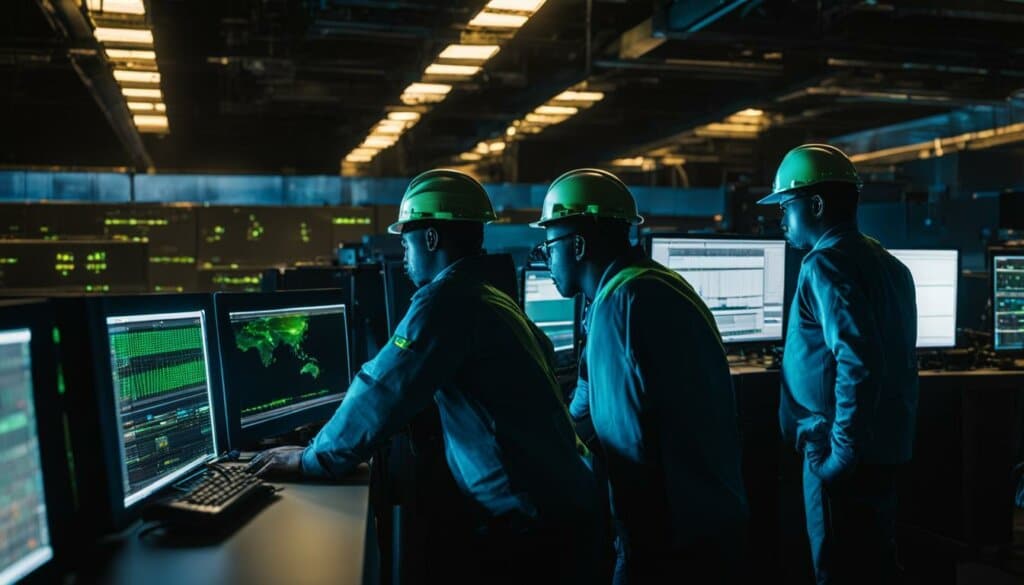
Image: An illustration of Litecoin mining, showcasing the process of confirming transactions on the Litecoin blockchain using specialized mining hardware and software.
How to Mine Dogecoin
Dogecoin mining is a process that involves verifying transactions on the Dogecoin blockchain and earning rewards in the form of newly generated Dogecoin and transaction fees. To start mining Dogecoin, you will need specialized Scrypt-based ASIC mining equipment designed specifically for Dogecoin. These miners offer superior performance and efficiency when compared to traditional CPUs or GPUs.
Joining a mining pool is recommended for most miners, as it allows you to combine your computational power with other miners. By pooling resources, miners have a higher chance of successfully mining a block and obtaining rewards. Popular mining pools for Dogecoin include “Poolin” and “ProHashing.”
Once you have acquired the necessary mining equipment and joined a mining pool, the next step is to download and set up mining software. The mining software communicates with the mining pool and enables your hardware to contribute to the mining process. Suitable mining software for Dogecoin includes “CGMiner” and “EasyMiner.”
Table: Comparison of Dogecoin Mining Pools
| Pool Name | Hashrate | Payout Method | Fees |
|---|---|---|---|
| Poolin | 5,000 MH/s | PPS+ | 2% fee |
| ProHashing | 3,000 MH/s | PPLNS | 4% fee |
Once everything is set up, mining will commence, and you will start contributing to the Dogecoin network’s security and the processing of transactions. The rewards earned from mining Dogecoin will be distributed to you based on your contribution to the mining pool.
Mining Dogecoin can be a rewarding process, both in terms of earning Dogecoin and being part of a vibrant community. Always ensure you have the necessary mining equipment, join a reputable mining pool, and use reliable mining software to optimize your mining experience.
How to Mine Ethereum
Ethereum, one of the leading cryptocurrencies, has transitioned from the traditional proof-of-work (PoW) consensus mechanism to a proof-of-stake (PoS) system. This change has eliminated the need for traditional mining as we know it. Instead of using computational power to solve complex mathematical puzzles, Ethereum miners now contribute to the network’s security by staking their Ether holdings. While PoS mining differs from PoW mining, there are still opportunities to mine cryptocurrencies that use the PoW algorithm, such as Ethereum Classic (ETC).
If you’re interested in mining Ethereum, the first step is to understand the shift to PoS and the limitations it imposes on traditional mining operations. However, if you wish to mine Ethereum Classic, the process is similar to mining Ethereum itself since both cryptocurrencies use the same ETHash algorithm.
To mine Ethereum Classic or other PoW cryptocurrencies, you’ll need the following:
- Mining hardware: ASIC miners or powerful GPUs
- Mining software: Configured to work with your chosen hardware
- Mining pool: Joining a mining pool increases your chances of earning rewards
By setting up the appropriate hardware, software, and joining a mining pool, you can participate in mining Ethereum or Ethereum Classic, depending on your preference. It’s important to stay updated with the latest developments in the Ethereum network to adapt your mining strategy accordingly.
Comparison of Ethereum and Ethereum Classic Mining
| Ethereum | Ethereum Classic | |
|---|---|---|
| Consensus Mechanism | Proof-of-Stake (PoS) | Proof-of-Work (PoW) |
| Main Algorithm | ETHash | ETHash |
| Hardware | GPU mining | ASIC miners or GPU mining |
| Mining Pool | N/A (No traditional mining) | Available |
| Rewards | N/A (No traditional mining) | Ethereum Classic (ETC) |
Note: The information above is subject to change as the Ethereum ecosystem continues to evolve. Stay informed about the latest updates from the Ethereum Foundation and Ethereum Classic community.
How to Mine Zcash
Zcash mining is a popular activity among cryptocurrency enthusiasts looking to earn rewards by utilizing their computing power. To start mining Zcash, you will need specialized hardware known as ASIC miners, which are designed to efficiently solve the mathematical puzzles on the Zcash blockchain. These ASIC miners offer superior computational capabilities, making them the preferred choice for Zcash mining.
Joining a mining pool is recommended for most Zcash miners, as it increases the chances of earning regular rewards. By pooling together resources and sharing the computational power, miners have a higher probability of successfully mining Zcash blocks. Additionally, mining pools simplify the mining process by providing mining software that is compatible with the selected hardware and pool.
When setting up Zcash mining software, make sure to download the appropriate software for your ASIC miner and input the required details of your chosen mining pool. Once the setup is complete, you can start mining Zcash and contributing to the security and stability of the Zcash blockchain.
Zcash mining offers an opportunity to participate in the cryptocurrency ecosystem and potentially earn rewards by utilizing your computational power. By utilizing specialized ASIC miners and joining a mining pool, you can maximize your chances of success and enjoy the benefits of Zcash mining.
Table:
| Step | Description |
|---|---|
| 1 | Acquire specialized ASIC mining hardware |
| 2 | Join a Zcash mining pool |
| 3 | Download and set up mining software |
| 4 | Configure mining software with pool details |
| 5 | Start mining Zcash |
What is Zcash Mining?
Zcash mining involves contributing computational power to the Zcash network to solve complex mathematical puzzles and verify transactions. The process of mining Zcash helps secure the network and maintain the integrity of the blockchain. Miners are rewarded with newly minted Zcash coins for their efforts, making mining an attractive venture for cryptocurrency enthusiasts.
While the initial setup and investment required for Zcash mining may seem daunting, the potential rewards and contribution to the Zcash ecosystem make it a compelling activity for those interested in cryptocurrencies.
How to Mine Monero
Monero mining is a process that involves using a computer’s processing power to solve mathematical puzzles and add privacy to Monero transactions. Previously, Monero mining utilized the CryptoNight proof-of-work (PoW) algorithm, but it has since switched to the RandomX algorithm. Miners can use CPUs or GPUs to mine Monero and earn rewards in the form of newly created Monero coins.
When it comes to mining Monero, there are a few steps to follow. First, miners need to download and install mining software compatible with their hardware. Popular mining software options for Monero include XMRig and CSminer. It’s important to ensure that the software is up-to-date to optimize mining performance.
Joining a mining pool is recommended for miners looking for consistent returns. By joining a mining pool, miners combine their resources with other participants to increase their chances of successfully mining Monero blocks. Additionally, miners can take advantage of peer-to-peer mining pools, such as P2Pool, to benefit from frequent rewards while also preserving the decentralization aspect of cryptocurrency mining.
“Monero mining involves using a computer’s processing power to solve mathematical puzzles and add privacy to Monero transactions.”
The CryptoNight Algorithm
The CryptoNight algorithm used by Monero is designed to be resistant to application-specific integrated circuit (ASIC) miners. This means that the algorithm is more CPU-friendly, enabling a wider range of individuals to participate in Monero mining using their existing hardware. The algorithm also provides enhanced privacy features, making Monero a popular choice for those seeking anonymity in their cryptocurrency transactions.
| Key Highlights of Monero Mining | |
|---|---|
| Algorithm | CryptoNight (previously), RandomX (current) |
| Hardware | CPU or GPU |
| Mining Software | XMRig, CSminer, etc. |
| Mining Pools | Joining a mining pool is recommended for consistent returns. |
By following these steps and staying up-to-date with the latest mining software and hardware developments, individuals can participate in Monero mining and potentially earn rewards in the form of newly minted Monero coins.
Key Risks Associated with Cryptocurrency Mining and How to Address Them
Cryptocurrency mining, while potentially lucrative, is not without its risks. It’s important for miners and organizations to be aware of these risks and take appropriate measures to mitigate them. Here are some key risks associated with cryptocurrency mining and ways to address them:
- Cryptocurrency mining regulations: As the cryptocurrency landscape evolves, governments around the world are developing regulations to govern the mining industry. Miners should stay informed about local laws and regulations that pertain to cryptocurrency mining. This includes understanding corporate income tax requirements and compliance with regulations related to money transmission. Staying updated on current regulations is essential to ensure compliance and avoid legal issues.
- Price volatility: Cryptocurrencies are known for their price volatility, which can significantly impact mining profitability. The value of mined coins may fluctuate, making it essential for miners to carefully analyze and manage the costs associated with mining. This includes considering electricity expenses and the ongoing maintenance and upgrade costs of mining hardware. Miners should also factor in market conditions and potential price swings when making mining investment decisions.
- Mining costs: Mining cryptocurrencies requires significant computational power, which translates into high electricity consumption and associated costs. Miners should consider the cost of electricity in their region and calculate the potential profitability of mining based on these expenses. Additionally, the ongoing costs of hardware maintenance and upgrades should be taken into account. Conducting a thorough cost-benefit analysis is crucial to ensure the viability of a mining operation.
- Compliance: Compliance with local laws and regulations is imperative in the cryptocurrency mining industry. Miners should ensure they are aware of and comply with all relevant regulations, including taxation requirements and reporting obligations. This includes properly documenting mining income and ensuring compliance with anti-money laundering (AML) and know-your-customer (KYC) regulations. By maintaining proper compliance, miners can avoid legal issues and ensure the longevity of their mining operations.
“It’s crucial for miners to stay informed about local laws, manage mining costs effectively, and ensure compliance with regulations to navigate the risks associated with cryptocurrency mining.” – Mining Expert
By understanding and addressing these key risks, cryptocurrency miners can enhance the security and profitability of their operations. Staying updated on regulatory developments, carefully managing costs, and maintaining compliance are all essential steps in building a successful and sustainable mining operation.
| Risk | How to Address |
|---|---|
| Cryptocurrency mining regulations | Stay informed about local laws and regulations, comply with reporting obligations, and seek legal advice if necessary. |
| Price volatility | Conduct a thorough cost-benefit analysis, consider market conditions, and manage risk by diversifying mining activities. |
| Mining costs | Calculate electricity expenses, consider ongoing hardware maintenance and upgrade costs, and regularly reassess mining profitability. |
| Compliance | Maintain proper documentation, comply with taxation and reporting requirements, and implement robust AML and KYC procedures. |
By proactively addressing these risks, miners can navigate the challenges of cryptocurrency mining and maximize their chances of success in this dynamic industry.
What is Bitcoin Mining? Bitcoin Mining Explained
Bitcoin mining is a crucial process in the creation and verification of transactions on the Bitcoin blockchain. It plays a vital role in maintaining the integrity and security of the network. Miners use their computing power to solve complex mathematical problems, known as cryptographic puzzles, which confirm and validate transactions. By solving these puzzles, miners add new blocks to the blockchain, ensuring that the Bitcoin network remains decentralized and tamper-resistant.
A key challenge that Bitcoin mining addresses is the “double-spend problem.” Without a central authority, there is a risk that someone could spend the same Bitcoin more than once. Miners verify and validate transactions, ensuring that each coin can only be spent once, effectively solving the double-spend problem.
The block reward is an essential incentive for miners to participate in the mining process. Whenever a miner successfully adds a new block to the blockchain, they are rewarded with a specific amount of newly minted Bitcoin. This reward serves as both an incentive for miners and a mechanism for the controlled release of new Bitcoin into circulation. Additionally, miners earn transaction fees for including transactions in the blocks they mine, further incentivizing their participation.
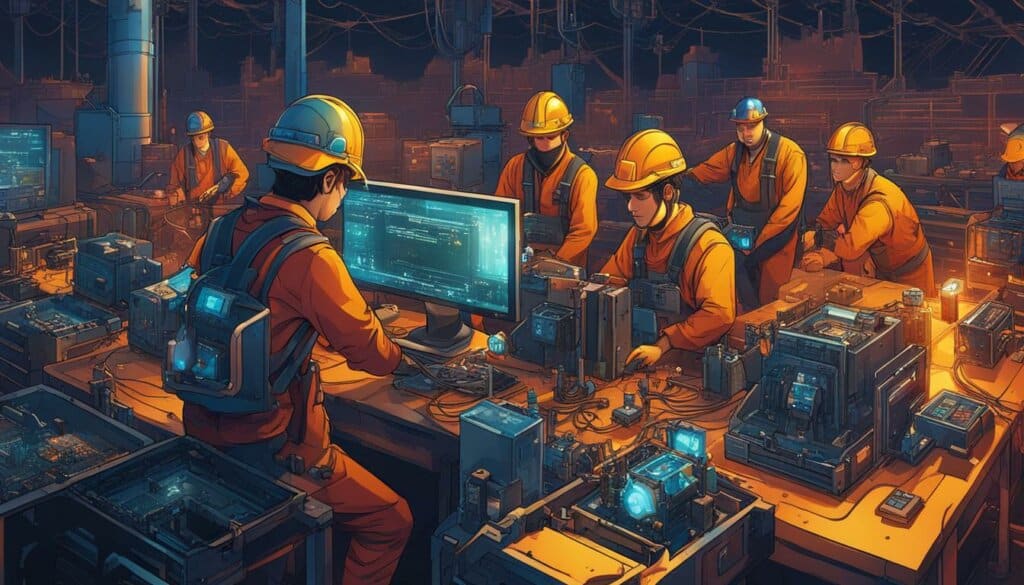
The Mining Difficulty and Mining Hardware
Bitcoin mining difficulty is a crucial aspect of the mining process. It refers to the complexity of the mathematical puzzles miners need to solve to add a new block. The difficulty level adjusts every 2016 blocks to ensure that the average time it takes to solve a block remains around 10 minutes. As the number of miners and their computing power increases, the difficulty also adjusts to maintain a constant block time.
To effectively mine Bitcoin, specialized hardware called Application-Specific Integrated Circuits (ASICs) is commonly used. These devices are specifically designed to perform the complex calculations required for mining Bitcoin, offering significantly higher computational power and efficiency compared to traditional CPUs or GPUs. ASICs have become essential for competitive Bitcoin mining due to their superior performance and energy efficiency.
| Key Points: | Bitcoin Mining |
|---|---|
| Process | Creating and verifying transactions on the Bitcoin blockchain. |
| Objective | Secure the network, solve the double-spend problem, and add transactions to the blockchain. |
| Reward | Newly minted Bitcoin and transaction fees. |
| Difficulty | Adjusts every 2016 blocks to maintain a constant block time. |
| Hardware | Specialized ASICs for efficient and competitive mining. |
Why Mine Bitcoin?
Bitcoin mining can be a profitable venture for individuals looking to generate income in the cryptocurrency space. With the potential to earn Bitcoin rewards, mining offers a unique opportunity to participate in the digital economy. Whether you’re interested in mining for profit or simply as a hobby, Bitcoin mining can provide financial incentives and a chance to learn more about the underlying technology.
One of the main benefits of Bitcoin mining is the potential for significant rewards. Miners are rewarded with newly minted Bitcoin for successfully verifying transactions and securing the network. These rewards can add up over time, especially for miners who have access to high-performance mining hardware and join mining pools. By joining a mining pool, miners can combine their computing power with other miners, increasing their chances of earning rewards and maximizing profitability.
Moreover, Bitcoin mining can be an engaging and fulfilling hobby for tech enthusiasts. It allows individuals to explore the intricacies of blockchain technology and be part of a global network that ensures the security and integrity of Bitcoin transactions. Mining can be a hands-on experience, requiring miners to set up their mining rigs, configure software, and monitor their mining operations. It offers a unique opportunity to learn about computer hardware, software optimization, and the complexities of blockchain consensus mechanisms.
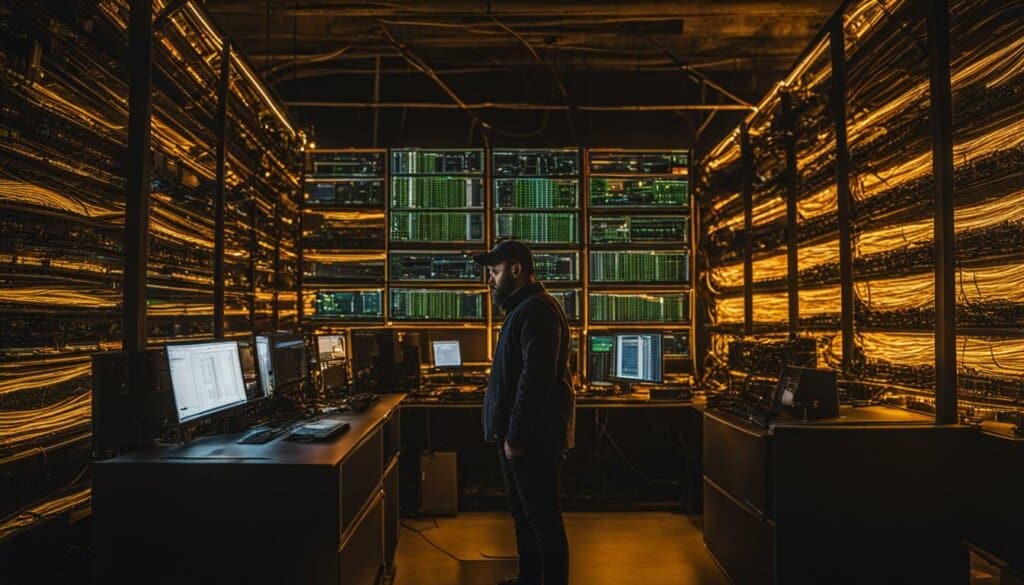
Rewards and Mining Pools
| Benefits of Bitcoin Mining | |
|---|---|
| Potential for significant rewards | Earn Bitcoin for verifying transactions and securing the network |
| Engaging and fulfilling hobby | Explore the intricacies of blockchain technology |
| Opportunity to learn computer technology | Understand hardware, software, and blockchain consensus |
| Joining mining pools | Combine computing power with other miners to increase chances of earning rewards |
Bitcoin mining offers a unique opportunity to participate in the digital economy, whether as a source of profit or a way to learn about technology. By joining mining pools and leveraging high-performance mining hardware, individuals can increase their chances of earning Bitcoin rewards. Furthermore, mining allows enthusiasts to gain hands-on experience in computer technology and the complexities of blockchain consensus mechanisms. Overall, Bitcoin mining presents an exciting and potentially lucrative venture for those interested in the world of cryptocurrencies.
Is Bitcoin Mining Legal?
Bitcoin mining is a topic that often raises questions about its legal status. The legality of Bitcoin mining varies from country to country, and it’s essential for miners to be aware of the regulations in their jurisdiction. Generally, Bitcoin mining is considered legal in many jurisdictions, as it is seen as a legitimate way to participate in the cryptocurrency ecosystem. However, it’s important to note that some countries have imposed restrictions or even outright banned Bitcoin mining.
In countries where Bitcoin mining is legal, miners still need to comply with certain regulations. These regulations may include obtaining the necessary licenses, paying taxes on mining rewards, and adhering to local laws related to money transmission. Compliance with these regulations is crucial to ensure that miners operate within the bounds of the law and avoid potential legal issues.
As the popularity of cryptocurrencies continues to grow, more governments are creating legislation to regulate the industry. It’s important for miners to stay informed about any changes in cryptocurrency legislation and to understand the legal implications of their mining activities. By staying up to date with the latest regulations and adhering to them, miners can ensure that their mining operations are conducted within the legal framework of their jurisdiction.
Key Takeaways:
- Bitcoin mining is generally considered legal in many jurisdictions.
- Miners need to be aware of the regulations in their jurisdiction and comply with them.
- Regulations may include obtaining licenses, paying taxes, and following local laws related to money transmission.
- Miners should stay informed about cryptocurrency legislation and any changes that may affect their mining activities.
Conclusion
Cryptocurrency mining is a complex process that requires specialized hardware, mining software, and knowledge of different cryptocurrencies and mining strategies. By following the steps outlined in this guide, individuals can start mining popular cryptocurrencies like Bitcoin, Litecoin, Dogecoin, Ethereum, Zcash, and Monero.
However, it is essential to be aware of the risks associated with mining. Regulatory uncertainty and price volatility are two significant challenges that miners may face. Staying informed about local laws and regulations, analyzing mining costs, and complying with legal requirements are crucial for a successful mining operation.
In summary, cryptocurrency mining can be a profitable venture, but it requires dedication, ongoing learning, and patience. Understanding the technical aspects and keeping up with industry developments are key to optimizing mining efficiency. It’s important to weigh the potential rewards against the associated risks and make an informed decision before embarking on a mining journey.
In conclusion, cryptocurrency mining offers opportunities for individuals to participate in the exciting world of blockchain technology. By staying informed, being diligent, and adapting to the evolving landscape, miners can navigate the challenges and potentially reap the rewards that come with cryptocurrency mining.
FAQ
What is cryptocurrency mining?
Cryptocurrency mining is the process of validating transactions on blockchain networks and earning rewards in the form of newly created cryptocurrency and transaction fees.
How does Bitcoin mining work?
Bitcoin mining involves using computing power to solve complex mathematical puzzles and create valid blocks that add transaction records to the Bitcoin blockchain. Miners are rewarded with newly minted Bitcoin and transaction fees for their efforts.
What hardware do I need to mine Bitcoin?
To mine Bitcoin, you need specialized hardware called ASICs (application-specific integrated circuits) that are specifically designed for mining Bitcoin.
Should I mine Bitcoin alone or join a mining pool?
Most miners prefer to join a mining pool, where they combine their processing power with other miners to increase their chances of earning rewards and splitting the profits.
How do I start mining Litecoin?
To mine Litecoin, you need to purchase specialized ASIC miners designed for Scrypt-based cryptocurrencies like Litecoin. Joining a mining pool is recommended for most miners.
What hardware do I need to mine Dogecoin?
Mining Dogecoin requires specialized Scrypt-based ASIC mining equipment made specifically for Dogecoin.
Should I solo mine or join a Dogecoin mining pool?
Joining a mining pool is the more common option for mining Dogecoin, as it increases the likelihood of earning consistent rewards.
What is the difference between mining Ethereum and Ethereum Classic?
Ethereum has transitioned to a proof-of-stake consensus mechanism, while Ethereum Classic still uses proof-of-work. This means that Ethereum mining has shifted to staking, while Ethereum Classic can still be mined using traditional mining methods.
What type of hardware is best for mining Zcash?
ASIC miners are often the most efficient hardware for mining Zcash due to their computational efficiency.
Can I mine Monero with my computer?
Yes, Monero can be mined using CPUs or GPUs. However, joining a mining pool is recommended for consistent returns.
What are the key risks associated with cryptocurrency mining?
Key risks include regulatory uncertainty, price volatility, and high mining costs. Miners should stay informed about local laws and regulations, carefully analyze the costs of mining, and comply with legal requirements.
Is Bitcoin mining legal?
The legality of Bitcoin mining varies by jurisdiction. Miners should be aware of local laws and regulations related to cryptocurrency mining.
Source Links
- https://cointelegraph.com/learn/how-to-start-mining-cryptocurrency
- https://cointelegraph.com/learn/how-to-mine-bitcoin-a-beginners-guide-to-mine-btc
- https://coinstats.app/blog/crypto-mining/

